#kufic square
Photo
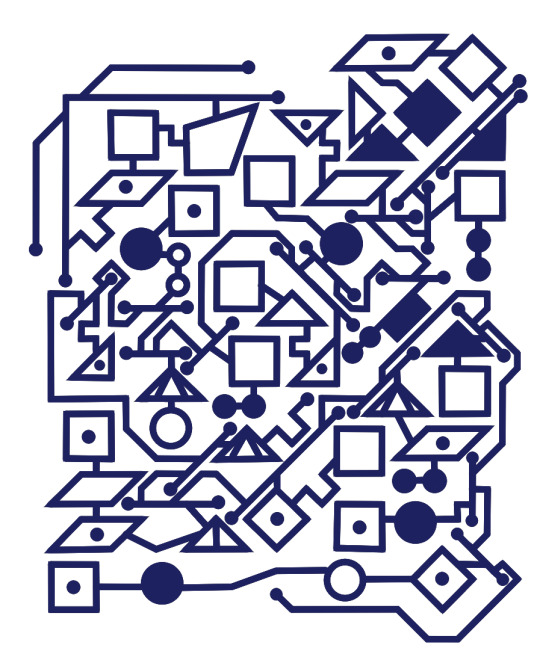
took a stab at designing adora’s tattoo from @n7punk‘s OtW series (& forevermore) despite first ones’ language being the worst script in the world bc unfortunately it does make for a pretty dope tattoo
except like. alright. full disclosure. i remembered the words wrong and i wrote ‘to the end’ instead of ‘until the end’ and i tried fixing it like three different ways but none of them look as good. so. please accept this almost-fic-canon-compliant fanart with a grain of salt
#clare's art#she ra#first ones' language#honestly still not sold on this... originally i was doing a radial design but i was doing some research on calligraphy#and square kufic seemed like. really really space efficient. which was the big challenge#so i might do another one of these in a different style once i get my shit together
113 notes
·
View notes
Note
Hello! re-typing this because i'm too lazy to copy-paste from @epenethesis,
I spent a great deal of time learning about various scripts, however this has been to the detriment of my ability to create new original ones as they have been too closely associated with existing ones.
I heard from them you may have advice, and i thank you wether you do or do not as long as you answer.
Be well, internet stranger.
Hi! So to introduce myself briefly I do type design & calligraphy and something I do often is learn historic scripts and styles from manuscripts etc and thats how I get feels for things. I think if you learn more about different styles of the scripts and notice patterns it'd help u make more original looking scripts. In any case, here are some of my general advices on creating & learning scripts:
1. scripts have rhythm, visually and in stylus movement
Scripts tend to have repeated elements. strokes, joints, spacing, etc. For example, lowercase latin has vertical weight between the baseline and the x height, and this is its natural resting space. Occasionally letters have ascenders and descenders. horizontally, letters have semi-evenly spaced downstrokes (see letters like m and n) with the writing pattern of ↓→↓→ etc.
2. "Intermediate stage" does not exist.
Something that people do commonly while evolving a script is that they create intermediate stages that do not have patterns or rhythms, but these intermediate scripts should be on their own self contained systems
3. Scripts have multiple styles simultaneously that influence each other.
Scripts don't simply evolve linearly. Modern latin has so many styles and that is the case for most scripts. Modern Greek letterforms are a fusion of original Greek minuscule forms and forms evolved from uncial (sigma has both, with the final form deriving from uncial)
4. Consider the motion of the pen
Some nib shapes make it harder to draw strokes in certain directions, and in general strokes going from left to right and top to bottom are more common because generally it is easier to pull than push. some writing utensils allow you to write in any direction, and often from switching from the former systems to the latter, scripts gain seeminglt redundant and complex looking connective strokes. (think javanese and copperplate calligraphy) Limiting stroke directions also helps with consistent writing rhythm. (try drawing a square multiple times with one stroke in one direction, you will find that it is significantly harder to keep it square than breaking it up into multiple strokes) (Note: Contrary to popular belief writing on leaves isnt what makes indic scripts look loopy and geometric, it is the unfamiliarity with the various scripts by people who perpetuate this myth)
5. Different styles with different quirks may be used for different purposes
Short titles and signs may use bold and ornate styles (black letter, lombardic capitals, aksar mul, bold cleric script, kanteiryu, kufic) or archaic styles (roman capitals, seal script).
Formal body text may use either space-efficient blocky styles (black letter, uncial, cleric script, jain nagari style) or more balanced organic styles (humanist, regular script, etc).
Informal body text may use semicursive (italic, bâtarde, running script, etc) or cursive (grass script, etc)
6. Don't trust online sources on script evolution
study your manuscripts and form ur own perception of things cause so many people are Wrong on the internet
---
Now for a more practical example, this is how i made Ekavathian:
I came up with this asemic sketch, borrowing the rhythm from Javanese and the diagonals from Lontara.
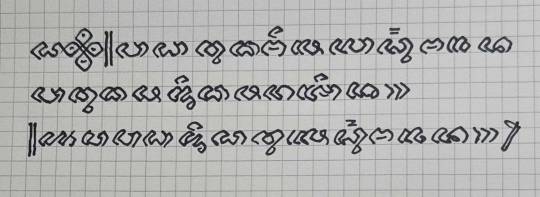
We felt that this was too visually cluttered, so I simplified the shapes and picked letters.
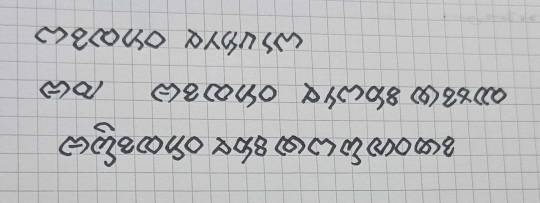
I iterated on it, writing text to see how it feels and making the letters feel more natural to write


I began working on the font, and I started with the square thing and expanded from there. I wanted it to have an indic pen angle with some stroke modulation


I settled on this for the stroke pattern. Feels natural for the kind of shapes i have.
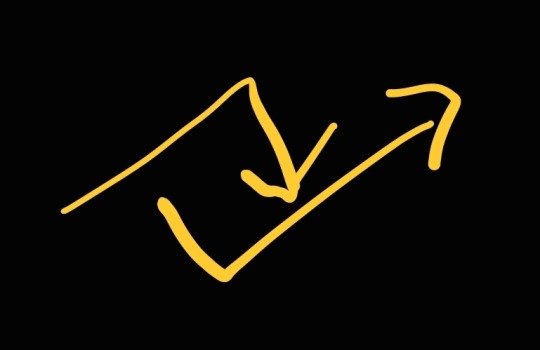
This is my handwriting after making the font (brainstorming cursive idea) and its kinda funny how I got better at writing a completely made up script lol

In any case if you have questions about specific things ask me any time
20 notes
·
View notes
Photo

Jewish art is of interest to me so when I saw the magen davids on this object, which is just identified as a “scorpion amulet”, I opened the record; it’s catalogued as coming from the Middle East and is under the aegis of the Department of Islamic Arts, so possibly it’s not Jewish or is only Jewish inspired. I wish we knew; the engraving around the edge, which is Kufic (a decorative Arabic script), apparently simply identifies the stars, the scorpion, and what they say is a feline, though on first blush I thought it was a cow.
What does it mean? What does it all mean? (Probably if I spoke French or read Kunic I’d know more.)
[ID: A square lead object that looks like it’s pretty small; engraved on the front are three six-pointed stars in the Jewish style, underneath which a cat is facing a large, delicately-carved scorpion which appears to be stinging the cat with its tail. There are two layers of angular kunic script surrounding the image. I am describing them and they are describing the image; this is getting meta very quickly.]
38 notes
·
View notes
Text
Arabic calligraphy
From the earliest times the written word was used as the major and sometimes the sole type of mosque ornamentation.
The development of Islamic calligraphy is strongly tied to the Qur'an. The style later developed into several varieties, including floral, foliated, plaited or interlaced, bordered, and square kufic. In the ancient world, though, artists would often get around this prohibition by using strands of tiny writing to construct lines and images. An ancient Arabic proverb illustrates this point by stating that "Purity of writing is purity of the soul."nit reflects the centrality of the notion of writing and written text in Islam. For instance, the Islamic prophet Muhammad is related to have said: "The first thing God created was the pen."




2 notes
·
View notes
Text
am trying to find a good kufic square(arabic) font. it needs to be free and allow commercial use.
seems like am gonna have to make my own.
this is kufic square for anyone wondering
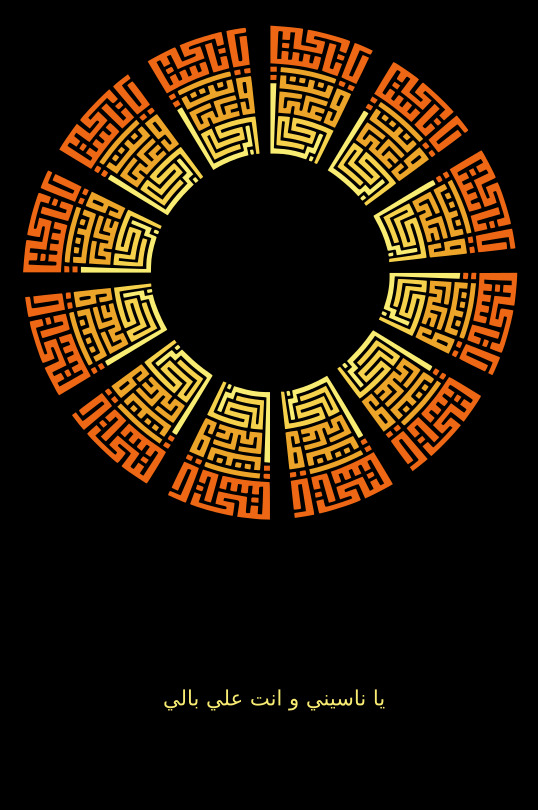
#i want to try using arabic text in psychedelic posters#but normal fonts don't work for it#and i want to see if my normal workflow could work before trying to apply calligraphy into posters#arabic#font#ask tumblr#question
0 notes
Text
Being driven to madness and repetitive strain injury by trying to draw a Han character in the style of square kufic calligraphy for the sake of a bilingual pun
0 notes
Text
The Basics Of Business Card Design
New Post has been published on https://wr1tepress.com/the-basics-of-business-card-design/
The Basics Of Business Card Design
Whether you’re on a Sales Call, Company Networking Event or even a Party, the practice of swapping business cards is the most common way to make an introduction. Why is it then that so many of us arrive at meetings and trade shows without our Business Cards?
Islamic calligraphy is a visible expression of the highest art of all for the muslim. It is the art of the spiritual world. Calligraphy literally means writing beautifully and ornamentally. Islamic calligraphy is the art of writing, and by extension, of bookmaking. This art has most often employed the Arabic script, throughout many languages. Since Arabic calligraphy was the primary means for the preservation of the Quran, Calligraphy is especially revered among Islamic arts. The work of the famous muslim calligraphers were collected and greatly appreciated throughout Islamic history. Consideration of figurative art as idolatrous led to calligraphy and abstract figures becoming the main methods of artistic expression in Islamic cultures. Contemporary muslim calligraphers are also producing the Islamic calligraphy of high artistic quality.
Calligraphic scripts
The Kufic script is the first of those calligraphic scripts to gain popularit.
It was angular, made of square and short horizontal strokes, long verticals, and bold, compact circles.
For three centuries, this script had been mainly used to copy the Quran.
The cursive Naskh script was more often used for casual writing.
This script had rounder letters and thin lines.
It would come to be preferred to Kufic for copying the Quran as techniques for writing in this style were refined.
Almost all printed material in Arabic is in Naskh.
The Thuluth would take on the ornamental role formerly associated with the Kufic script in the 13th century.
Thuluth is usually written in ample curves as it has a strong cursive aspect.
The Persians took to using Arabic script for their own language, Persian after their conversion to Islam.
The Taliq and Nastaliq styles were contributed to Arabic calligraphy by the Persians.
Nastaliq style is extremely cursive, with exaggeratedly long horizontal strokes.
The Diwani script is a cursive style of Arabic calligraphy.
It was developed during the reign of the early Ottoman Turks (16th and early 17th centuries).
This outstanding Diwani script was both decorative and communicative.
Finally, Riqa is the most commonly used script for everyday use.
It is simple and easy to write.
Its movements are small.
In China, a calligraphic form called Sini has been developed.
This form has evident influences from Chinese calligraphy.
Hajji Noor Deen Mi Guangjiang is a famous modern calligrapher in this tradition.
Calligrams
The most Islamic of arts in the Muslim world, has also its figurative sides. The muslim calligraphers have produced wonderful anthropomorphic figures by interweaving written words, made from an “Allah” , a “Muhammad” , a “Bismillah” , etc., or using micrography. These include , (Ali, the Ideal Human of mystics, a praying man, a face), (Duldul, horse of Ali, horse (Alis Duldul), fish, stork or other bird (the quranic Hudhud) and unanimated representations (a sword (Dhu al-Fiqar) and a mosque. Calligrams are related to Muslim mysticism and popular with many leading calligraphers in Turkey, Persia and India from the 17th century onward.
Pakistani Islamic Calligraphy
Pakistan has produced Islamic calligraphist of international recognition. Sadeqain is on of these international fame Islamic calligraphist. He was an untraditional and self-made, self-taught painter and calligrapher. He did a lot of work on Quranic calligraphy. Many other contemporary Pakistani calligraphists like Gul Gee have created great contemporary Islamic calligraphy. These days, Islamic calligraphies of Tufail and Uzma Tufail are getting very much popular both in Pakistan and all over the world.
Islamic Calligrahpy as an Islamic Gift
The Muslims love to adore their homes, offices and places of their work with the Islamic calligraphy. The Islamic calligraphies especially the verses from the Holy Quran and the verses from the sayings of the Holy Prophet are considered to be very sacred to muslims. Islamic calligraphy indeed make the perfect gift for a muslim for any special occasion. A muslim can send an Islamic gift of Islamic calligraphy to congratulate his relative or friend on his new home or new office or on his birthday or wedding ceremony or on Eid Festival.
It is great news for the muslims living all over the world to get the Islamic paintings and Islamic calligraphy of their own choice. Please visit our website at www.paintingsgifts4u.com and click the section of the Islamic paintings. You can get Islamic Calligraphy of your choice just by selecting the Item number of the Islamic Painting or by sending the Holy verse of your choice. We also supply Islamic paintings and Islamic Calligraphy from Pakistan on wholesale basis at very best prices. We are supplying cheap Islamic paintings and cheap Islamic calligraphies with high quality.
0 notes
Text
Send message to buy your custom name like this in high resolution vector form.
Square Kufic calligraphy
..
.
Follow me 👉 @elsaadiarts
..
#islamic #islamicquote #islamiccalligraphy #arabiccalligraphy #islamicclothing #islamicposts #islamicart #islamiccalligraphy #islamic_art #arabiclogos #islamicquotes #hatt #islamicwedding #islamicgift #islamicfashion #islamicwallart #hattat #islamicpaintingsforsale #islamicshop #islamiccouple #islamic_quotes #quranquotes #islamicdecor #muslimbusiness
#lasercut #ibrahim
instagram
#arabic logo#logo design#lettering#لوجوهات#لوقوهات#لوجو عربي#تصميم جرافيك#خط عربي#name calligraphy#muslim#islamic calligraphy#islamic#square kufic#Instagram
4 notes
·
View notes
Photo

Poster 28
Photo of human rights activist Loujain Alhathloul by Nina Manandhar
#lujain alhathloul#poster#graphic design#arabic typography#Typography#square kufic#feminism#Loujain Alhathloul#Nina Manandhar
22 notes
·
View notes
Photo


Some archeologists now suggest that the vikings were heavily inspired by islam and made their own Arabic square kufic script. Read more here.
55 notes
·
View notes
Photo

Chichi or Dirband Type Carpet, 1856, Brooklyn Museum: Arts of the Islamic World
Central field: off-white with rows of repeating floral elements in red, light blue, and darker blue. Borders (inner to outer): #1 - narrow, light blue with red edge; #2 - teal blue with red and white, blue, red and dark blue, and light blue with pink flowers; #3 - light blue with dark blue lozenges; #4 - red ground with pink pseudo-kufic and blue flowers; #5 - same as no. 3 with yellow edge, woven fringe. Knots per square inch: 184
Size: 55 1/2 x 33 1/2 in. (141 x 85.1 cm)
Medium: Wool
https://www.brooklynmuseum.org/opencollection/objects/124489
34 notes
·
View notes
Photo

Flag of the United States in the style of Iran
from /r/vexillology
Top comment: Font could be thicker. Square Kufic isn't easy to read, but it's more legible than italic/cursive.
21 notes
·
View notes
Text
The Picturesque Faisal Mosque

The Faisal Mosque is a mosque located in Islamabad, Pakistan. It is the third-largest mosque within South Asia, located on the foothills of Margalla Hills in Pakistan's capital city of Islamabad. The Faisal Mosque was conceived as the National Mosque of Pakistan and named after the late King Faisal bin Abdul-Aziz of Saudi Arabia.
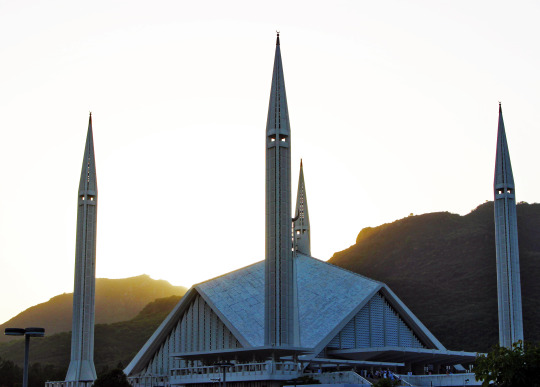
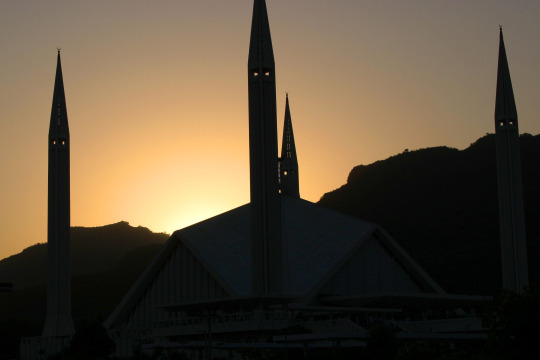
Faisal mosque is the major tourist attraction in Pakistan, the mosque is a contemporary and influential piece of Islamic architecture. It is located at the north of the city’s main against the backdrop and at the foot of the picturesque Margalla hill. Therefore, it created a focal point of the capital, to command the entire panorama of the city and to ensure visibility during day and night.

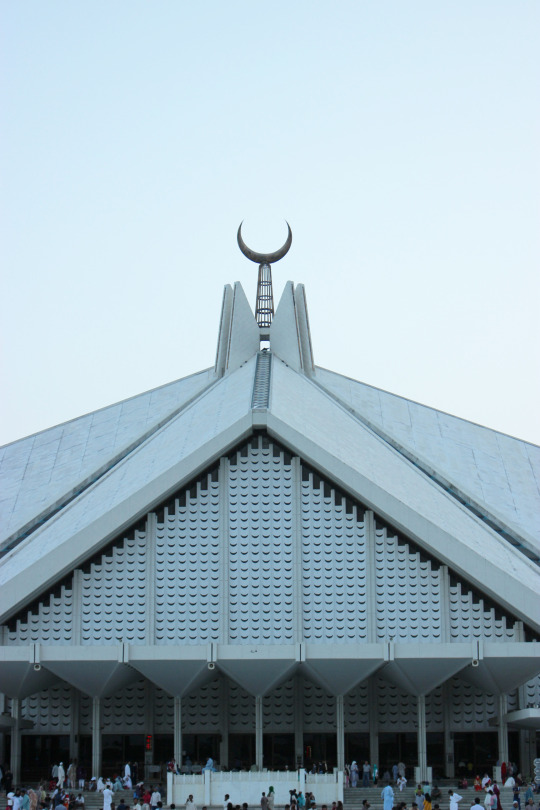
Completed in 1986, the mosque features a contemporary design consisting of eight sides of concrete shell and is inspired by the design of a typical Bedouin tent, designed by Turkish architect Vedat Dalokay, it is an iconic symbol of Islamabad throughout the world. It consists of a large triangular prayer hall and four minarets. However, unlike traditional masjid design. The minarets borrow their design from Turkish tradition and are thin and pencil like. Stabbing 260 feet into the air, the minarets were designed in a perfect one-to-one ration with the base, to create an invisible cube that alludes to the Kabaa.
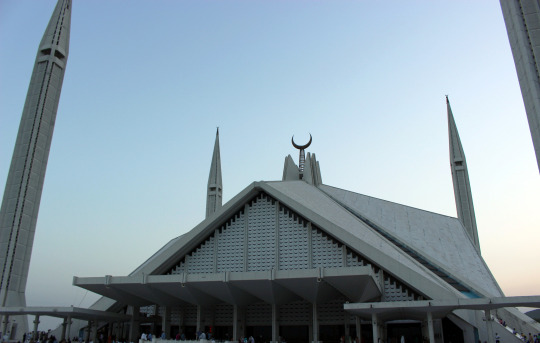
Instead of traditional domes usually associated with mosques, the main prayer hall is an eight faceted concrete shell representative of a desert tent. An impressive engineering feat, the shell reaches is supported on four giant concrete girders. The surface is faced in white marble and decorated inside with mosaics and a spectacular Turkish style chandelier. The hall can accommodate 10,000 worshippers. It covers a whopping 54,000 square feet, the mosque’s design is truly the most intriguing.
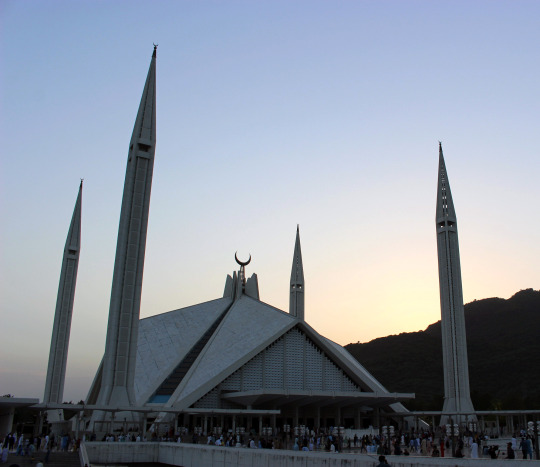
“Prayer is an amazing exchange. you hand over your worries to Allah and Allah hands over his blessings to you.”
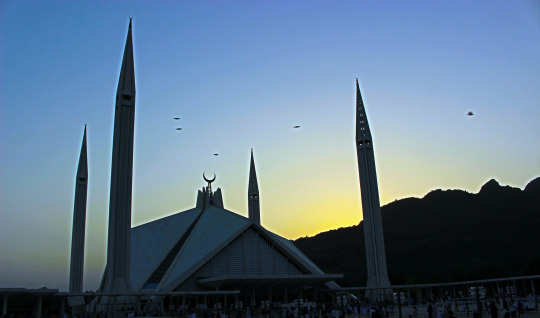
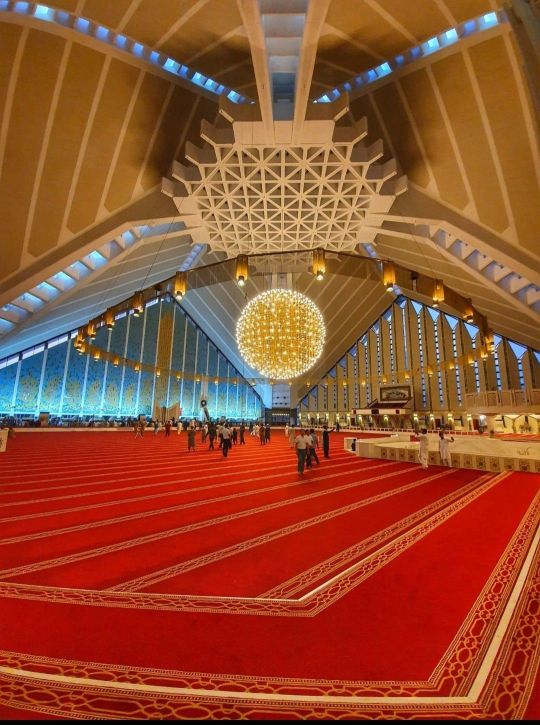
The interior of the main tent-shaped hall is covered in white marble and decorated with mosaics and calligraphy by the famous Pakistani artist Sadequain, and a spectacular Turkish-style chandelier.
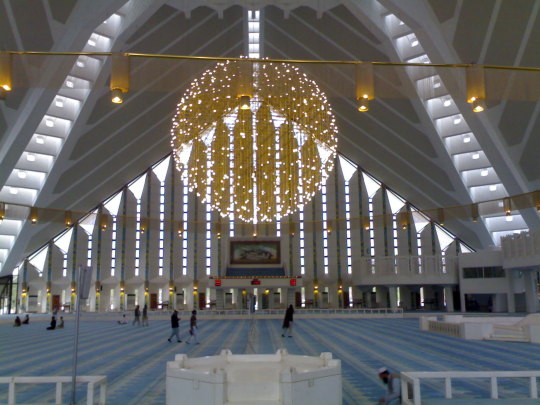
The mosaic pattern adorns the west wall and has the Kalimah written in early Kufic script, repeated in mirror image pattern.
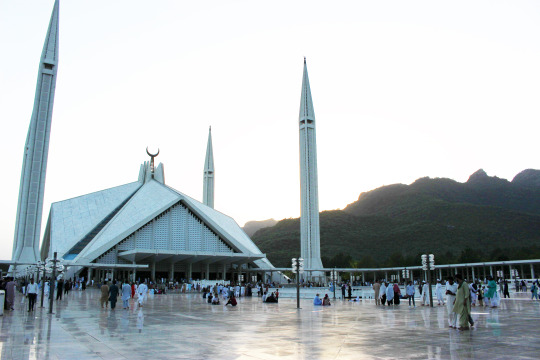
The primary purpose of the mosque is to serve as a place where Muslims can come together for prayer, as praying together holds great importance in Islam. Women can't offer namaz in a Mosque is a myth, Islam allows both men and women to offer namaz at the same place.
1 note
·
View note
Text
Might fuck around and make an embroidery project with square Kufic calligraphy as an expression of religious devotion 👀
#i’ll keep all 12 of y’all posted if I do#my idea might also exceed my artistic capacity#wish me luck#who let me speak#hobby tag
4 notes
·
View notes
Text




Square Kufic Calligraphy by Noha Raheem
5 notes
·
View notes